Introducing the list of India’s dog breeds

The list of Indian dog breeds is crucial for saving native breeds of dogs. We at barks.in believe that the best way to preserve native dogs is to document them precisely. Non-native dogs are pushing our dogs towards extinction.
As per some reports, of the 50+ native dogs, only 20+ remains. Most of us don’t know about many of these dogs. This list of dogs in the Indian subcontinent, we hope will help with the following.
- Will bring back to light these beautiful dogs.
- Enable people to appreciate their remarkable traits.
- Encourage native dog breeders to continue with these dogs.
- Get some of us to choose a native Desi dog over a non-native dog.
Important Note
We frequently update this post with new information, images, and prices.
History of dogs in India
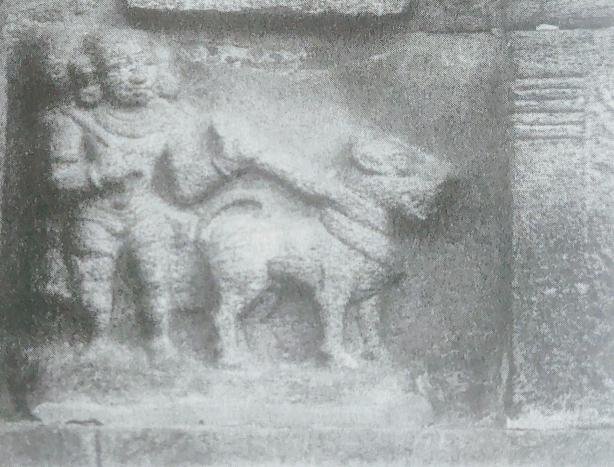
In India, domestic animals have always been a part of our lives. Our relationship with desi dogs dates back to 1000s of years. The earliest dog skeleton found in India dates back to 4500 years.
Ancient Indian texts talk about dogs in hunts, war, and in daily life. Temples have sculptures of dogs. In short, dogs have always been a part of everyday life in India.
The Pariah dog is the real desi dog. It is an Indian landrace. Many believe this dog to be one of the most ancient breeds of dogs in the world.
Why compile a list of desi dog breeds?
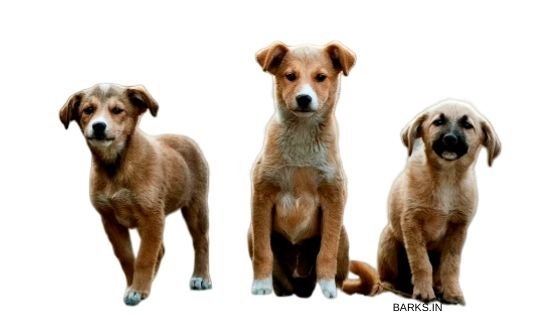
The current status of dogs hasn’t changed. The Indian pet industry is growing by leaps and bounds. There are more than 40 million stray dogs on our streets.
The decline of native dogs is because of the below reasons.
- Ignorance about the native breed of dogs keeps people away from them.
- The hype about non-native dogs is another reason that affects these dogs.
- Neglect of native Indian dogs.
List of Indian dog breeds and their ancestry
| Breed | Ancestor | Status | Type | Size | Exercise Need | Temperament | Apartment Living | Availability | Health |
|---|---|---|---|---|---|---|---|---|---|
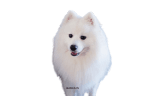 Indian Spitz |  German Spitz | Vulnerable | Spitz | Small | Low | Feisty, Intelligent | Suited | High | Good |
 Indian Pariah | |||||||||
 Rajapalayam |  Indian Pariah | Endangered | Sight Hound | Medium | High | Alert, Loving | Not Suited | Low | Excellent |
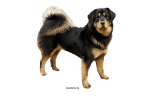 Bakharwal Dog |  Tibetan Mastiff | Critically Endangered | Mountain Dog | Large | Moderate | Stubborn, Aloof | Not Suited | Low | Good |
 Gaddi Kutta |  Kinnaur Sheepdog | Endangered | Mountain Dog | Large | Moderate | Fearless, Loyal | Not Suited | Low | Good |
 Jonangi Dog |  Indian Pariah | Critically Endangered | Hairless Terrier | Medium | Moderate | Loving, Protective | Not Suited | Low | Excellent |
 Patti Sheepdog |  Indian Pariah | Critically Endangered | Pariah | Medium | Moderate | Gentle, Loyal | Not Suited | Not sold | Excellent |
 Kuchi Dog | 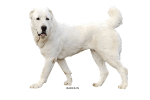 Central Asian Shepherd | Vulnerable | Mastiff | Giant | Moderate | Stubborn, Aggressive | Not Suited | Not sold | Good |
 Kombai Dog |  Indian Pariah | Critically Endangered | Terrier | Medium | Moderate | Protective, Territorial | Not Suited | Low | Excellent |
 Kanni Dog |  Sloughi | Endangered | Sight Hound | Medium | High | Loving, Protective | Not Suited | Low | Excellent |
 Indian Pariah | |||||||||
 Indian Pariah |  Indian Wolf | Vulnerable | Pariah | Medium | Moderate | Loyal, Gentle | Suited | High | Excellent |
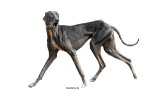 Mudhol Hound | 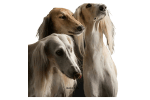 Saluki | Endangered | Sight Hound | Medium | High | Alert, Protective | Not Suited | Low | Excellent |
 Indian Pariah | |||||||||
 Rampur Hound |  Sloughi | Critically Endangered | Sight Hound | Medium | High | Alert, Protective | Not Suited | Low | Excellent |
 Indian Pariah | |||||||||
 Pandikona |  Indian Pariah | Critically Endangered | Terrier | Medium | Moderate | Territorial, Aggressive | Not Suited | Low | Excellent |
 Kaikadi |  Sloughi | Critically Endangered | Sight Hound | Medium | High | Loyal, Protective | Not Suited | Low | Good |
 Indian Pariah | |||||||||
 Vanjari Hound |  Indian Pariah | Critically Endangered | Sight Hound | Medium | High | Loyal, Protective | Not Suited | Low | Good |
 Gull Dong |  Central Asian Shepherd | Endangered | Mastiff | Giant | Moderate | Territorial, Aggressive | Not Suited | Low | Good |
 Pitbull Terrier |
Indian Spitz
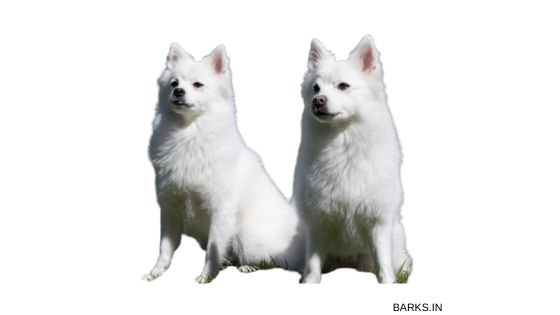
The Indian Spitz is a small breed of dog. This dog is a Spitz-type dog with European ancestry. They are the most popular native dog breed. These are friendly and are companion dogs.
History and origin of Indian Spitz
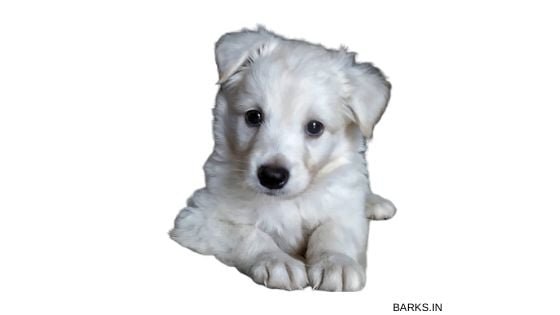
The Spitz arrived in India with the British in the 19th century. The British were fond of the Pomeranian dog and German Spitz. Queen Victoria owned several Poms. At one point in time, she had as many as 35 of these dogs. This fondness brought several of these dogs to Indian shores.
The dogs with their lush coat could not withstand the hot and humid weather. The British mixed a desi dog with these dogs. This mixture was most likely the origin of this breed of dog. The Kennel Club of India registers this dog as a native dog breed.
These dogs had a nickname, the “Englishman’s dog” due to its English origin.
The purpose of the Indian Spitz
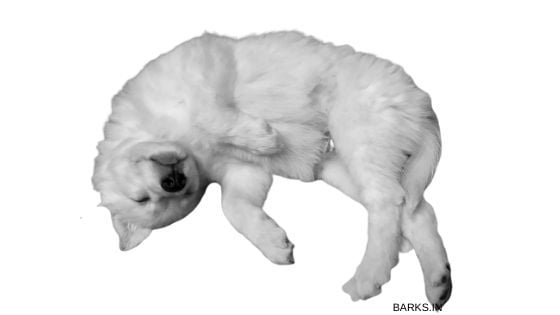
This dog is a utility dog. They are small, alert, and have a sharp bark making them good indoor watchdogs. These dogs serve two purposes.
Indoor watchdog
This dog is alert, and their small size makes them an ideal indoor watchdog. These dogs also have a keen sense of smell, which they put to good use while on the watch. The Spitz is courageous and is known to scare off intruders.
Companion dog
Their small size, cute looks, and a lively character made them an instant hit as companion dogs. In the 1980s, most homes had an outdoor guard dog, a Rajapalayam. The Spitz was indoor as a companion. This dog was more than a man’s best friend. They were a woman’s companion.
The physical traits of Indian Spitz

| Height | 40 cm to 45 cm |
| Weight | 5 kg to 12 kg |
| Coat | Double coat |
| Color | White is common, brown, black and mixes of white are rare |
| Age | 10 to 14 years |
| Litter size | 4 to 9 |
The Indian Spitz is a small-sized dog, 30 cm to 35 cm tall, and has a squared body.
Head: These dogs have a pointed muzzle with erect ears that have a triangular shape. They have back eyes, black lips, and nose contrast with their white color.
Body: The body of the Indian Spitz is square-shaped. They have long but a curled tail. The dog holds its tail over the body.
Legs: The legs are short and bony.
Coat: Spitz has double layers of fur. The inner-coat is dense, and the outer-coat is long and silky. The hair around the neck is long and soft.
The temperament of Indian Spitz
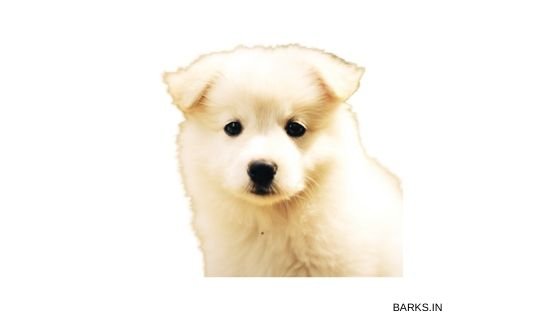
The Indian Spitz has a feisty and protective character. They long to be with their masters, never leaving their side. They are known to refuse food if not offered by their masters. Spitz is suspicious of new sounds, and new people, this makes them a good watchdog.
How to care for an Indian Spitz?
The Indian Spitz is a healthy breed of dog. Despite their long and dense fur, they can thrive in the hot and humid climate. Their long double coat requires daily grooming. Shedding of their hair is similar to humans.
The Spitz does well indoors and is an excellent choice for an apartment dog. They don’t need intense exercises; a short walk each day should keep them fit.
What is the current status of Indian Spitz?

Status: Vulnerable
The Indian Spitz was the most popular dog of the 80s. The introduction of non-native dogs like the Lhasa Apso they are on the decline.
Despite being a popular dog, Indian Spitz is not recognized by any international Kennel Clubs such as, the American Kennel Club, United Kennel Club or the FCI.
What is the price of Indian Spitz?
The cost of the Indian Spitz varies based on the region. These dogs are still well known in South India.
A show quality pup will cost between ₹10,000 to ₹15,000. A pet quality puppy will cost lesser ₹3,000 to ₹10,000.
Interesting Facts about the Indian Spitz
- Englishman’s dog is one of their nicknames.
- Indian Spitz is a utility dog.
- They are not a native Indian dog breed, but Kennel Club of India registers them as a native breed
- Indian Spitz has a feisty temperament
Rajapalayam dog

The Rajapalayam dog is a sighthound from the Rajapalayam town of South India. People used these dogs to guard their farms against wildlife. They are medium-sized hounds that are strong and built like a small tank.
History and origin of the Rajapalayam dog
This dog is an ancient dog that is 100s of years old. Edward Napier, an officer in the British army, was the first to describe this dog. He fought the Polygar wars against the Polygars in 1840. The soldiers trained these dogs to fight against the British in the war. Poligar hound was the name that was in use in the 18th century for these dogs.
The Rajapalayam is a native dog with the Indian Pariah, its likely ancestor. Like all the other native dogs, these dogs are slowly disappearing.
What is the purpose of the Rajapalayam?

These dogs are versatile and multi-purpose dogs. We have not seen any breed of dog that excels in so many fields as these.
Coursing and Hunting hounds
These dogs are hounds but with a muscular and stronger build. Their jaws are one of the most powerful in the canine world. These traits made them useful in wild boar hunts. Their bite force ranges between 200 and 220 lbs (90 kgs to 100 kgs). These dogs can stop a 150 kg wild boar dead on its tracks.
Guard dogs
These dogs are active and alert, which makes them excel as a watchdog. Their sturdy frame and intimidating presence can deter any intruder. Indian police and armed forces use these dogs in various roles.
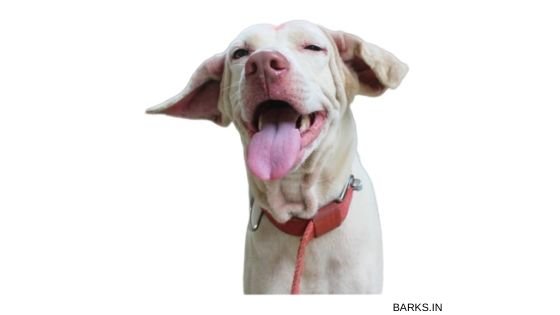
Companion dogs
The Rajapalayam dog is a loving dog. They will lay down their life for their masters. These dogs are patient with kids and, with proper training, make excellent companions.
What are the physical traits of the Rajapalayam?
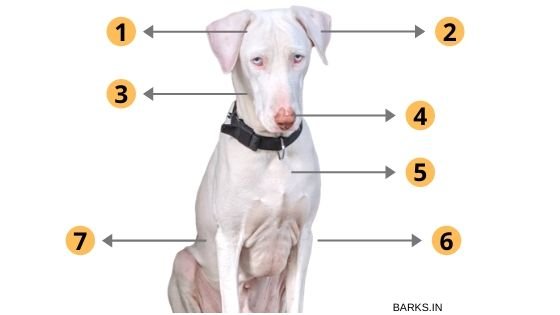
| Height | 60 cm to 65 cm |
| Weight | 25 kg to 30 kg |
| Coat | Single short coat |
| Color | Milky white |
| Age | 9 to 13 years |
| Litter size | 4 to 10 |
The Rajapalayam dog is medium in size and with a muscular build. They are sighthounds. They use their sight and strength to hunt their prey.
They are one of the very few dogs to occur in one color, milky-white. They have pink skin, which is visible through the short-coat.
The Rajapalayam dogs have a broad head with a pink nose. Their ears are pendant- shaped and are drooping with jaws that are strong and sturdy and can break bones.
The eyes of the Rajapalayam are dark. Studies have shown dogs with silver eyes are born deaf. They have a square-shaped body, and their top line is straight. The legs are strong and muscular. The tail of a Rajapalayam dog is whip-like with a curve in the end. They carry their tail low, raising it only when they are alert.
The temperament of Rajapalayam

These are loving and caring dogs who will lay down their life for their master. Stories about their courage are legendary. Once a pack of dogs is said to have defended their master from a tiger.
Remember, this is a dog that can take on a wild boar. Training these dogs while they are young helps these dogs to adapt to human life better.
Caring for a Rajapalayam
The Rajapalayam is a healthy breed of dog. They thrive in Indian conditions. They suffer from common ailments such as skin disease and food allergies. They are known to live long, and the oldest lived to be 17 years of age.
The current status of the Rajapalayam dog?
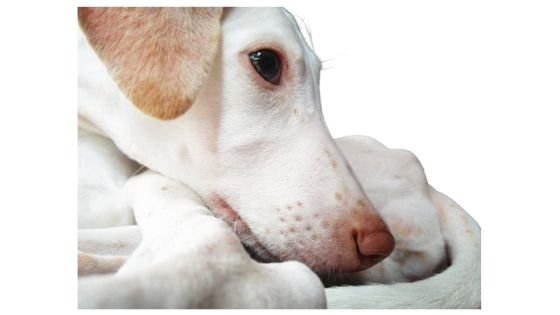
Status: Endangered
These dogs were once popular, but the breed is currently on the decline. This beautiful dog will soon disappear without concrete efforts. The Kennel Club of India conducts native dog shows to promote these dogs.
This dog needs your help, choose a native dog as your next pet.
What is the price of the Rajapalayam dog?
The cost varies based on the region. Top-quality dogs are available in Tamil Nadu. A show quality pup will cost between ₹18,000 to ₹22,000. A pet quality puppy will cost lesser ₹10,000 to ₹15,000.
Interesting Facts about the Rajapalayam dog
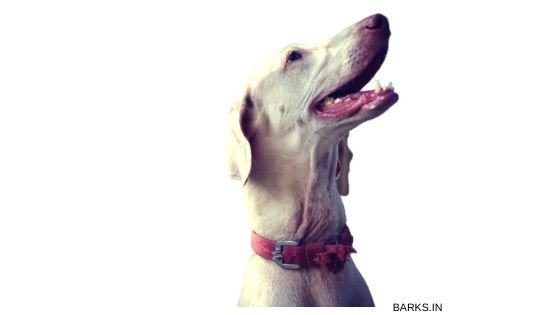
- This dog is a single-colored dog. White is the only color.
- They are a real multi-purpose dog.
- Indian postal services released a stamp with the image of this dog.
- The courage of these dogs is legendary.
Bakharwal Dog

The Bakharwal Dog is an ancient breed of a large dog. They are from the Pir Panjal Range in the Himalayan region of India. This dog belongs to the Molossers group of dogs from which the Mastiffs originate.
This dog is an ancient breed of dog bred by the Bakarwal and Gujjar tribes. These people were nomads, and the Bakharwal dog was their livestock guardian.
This dog looks similar to the Tibetan mastiff, with size being the only noticeable difference. The Bakharwal dog is smaller than the Tibetan mastiff. Due to the similarity between these dogs, some say that they could have a common ancestor.
The purpose of the Bakharwal dog

The Bakharwal dog is a large breed of dog used as livestock and home guardians. They have a deep and loud bark. The local people claim that this dog can bark without closing their mouths.
This dog, with its large size and loud bark, was an able guardian. While on travel, the tribal merchants leave their livestock and families with these dogs. This large dog protected the family until the return of its master.
Today, these dogs are in the police force fighting against militants. Sadly these dogs are shot by these intruders during these fights.
The physical traits of the Bakharwal dog
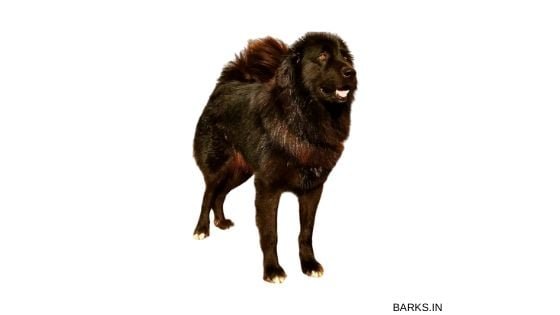
| Height | 65 cm to 70 cm |
| Weight | 35 kg to 40 kg |
| Coat | Double coat |
| Color | Multiple colors, fawn being the most common |
| Age | 8 to 11 years |
| Litter size | 2 to 4, one litter a year |
The Bakharwal is a large breed of dog weighing about 40 kg. The male stands at 70 cm tall. These dogs have double coats, a dense inner-coat with a longer outer-coat.
The Barkharwal has an alert expression. Their heads are broad with hanging ears which are set high in their head.
These dogs are sturdy with a square-shaped body. The tail is fluffy with fur. The Gujjar people cut the tip of their dog’s tail and feed it to the dog. This practice, they believe, makes the dog bolder. The dog has its tail curved over its topline. They have strong straight strong legs.
The temperament of the Bakharwal dog

These dogs have a stubborn and independent character. They need these traits to face the tough mountain life. The tribal people train their dogs on the job where these dogs learn the signs and calls.
The Barkharwal is courageous. They use their size and loud bark to intimidate intruders and alert their master.
These dogs are good with children and consider them as part of the herd.
Care of the Bakharwal dog
These are large dogs that thrive on the mountain. The Bakharwal is very healthy and can survive in cold weather. The Gujjar people are vegetarians, and many incorrectly believe this dog to be a vegetarian. The coat of this dog requires grooming and care.
The current status of the Bakharwal dog
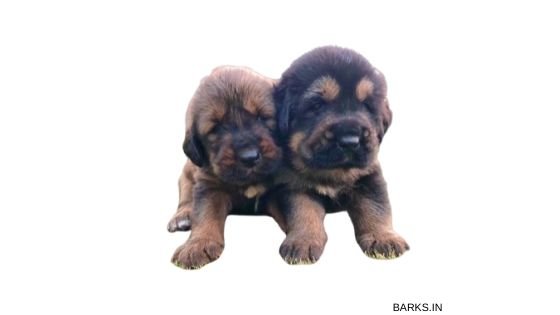
Status: Critically Endangered
A census carried out by the Tribal research foundation found only a few 100 dogs remaining. This dog litter only once a year, and the litter size is not more than four pups. This beautiful dog is on the verge of extinction.
What is the price of the Bakharwal dog?
Finding a Bakharwal is difficult; their numbers have rapidly declined. These dogs come at a premium price. A puppy costs about ₹35,000 to ₹50,000.
Interesting Facts about the Bakharwal dog
- The tip of their tails is cut and fed back to them. People believe that this practice makes the dog bold.
- Only a few 100 dogs remain, and they are on the verge of extinction.
- Many believe that this dog and the Tibetan mastiff share a common ancestor.
Himalayan Sheepdog (Gaddi Kutta)

The Gaddi shepherds use the Gaddi Kutta or the Himalayan sheepdog for herding and guarding their sheep. This dog is closely related to the Tibetan Collie.
History and origin of the Himalayan Sheepdog (Gaddi Kutta)

The Gaddi Kutta is from the north Indian states of Himachal Pradesh and Uttarakhand. This dog belongs to the Gaddi people who live in this part of India. The Gaddi people are shepherds who use this dog to guard their flock against snow leopards.
These are ancient dogs, and no one knows the origin of this dog. This dog has been with the Gaddi tribe for generations. Many believe that this dog and the Kinnaur Sheepdog of Tibet are related.
The purpose of the Himalayan Sheepdog (Gaddi Kutta)

This dog serves two purposes.
- Shepherd dog: The Gaddi people are shepherds who graze their sheep in snow-capped mountains. The snow leopard often preys on these sheep. This dog guards the flock against the leopard. For this reason, people call this dog the Indian Panther Hound.
- Guard dog: These dogs are medium-sized and alert. The Gaddi people rely on this dog to guard their homes.
The physical traits of the Himalayan Sheepdog (Gaddi Kutta)
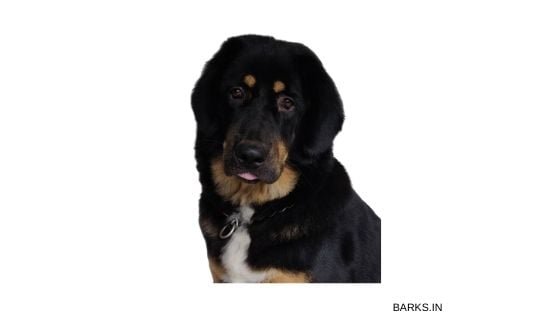
| Height | 65 cm to 70 cm |
| Weight | 30 kg to 35 kg |
| Coat | Double coat |
| Color | Multiple colors |
| Age | 9 to 13 years |
| Litter size | 4 to 6 |
The Gaddi Kutta looks similar to the Tibetan Mastiff but is smaller. This dog has a large head with erect ears. They have powerful jaws. The head looks like a wedge when one looks at it from the front.
These dogs have double coats, a short and dense inner-coat which provides insulation. The outer-coat is long and fluffy.
The body is square-shaped with a broad chest. The chest of this dog blends into their abdomen. These dogs carry their curled tails over their bodies. Their strong-tail has long, bushy, and beautiful fur.
The temperament of the Himalayan Sheepdog (Gaddi Kutta)

These dogs have an independent character. This trait is an essential trait for a mountain dog. These are powerful dogs. Their name, the Indian Panther hound, comes because of their courage. They are capable of fighting off the large snow leopard, which preys on the sheep.
Care of the Himalayan Sheepdog (Gaddi Kutta)
These are large dogs that thrive on the mountain. This dog is healthy and is well-adapted to the harsh mountain life. The coat of this dog requires grooming and care.
The current status of the Himalayan Sheepdog (Gaddi Kutta)
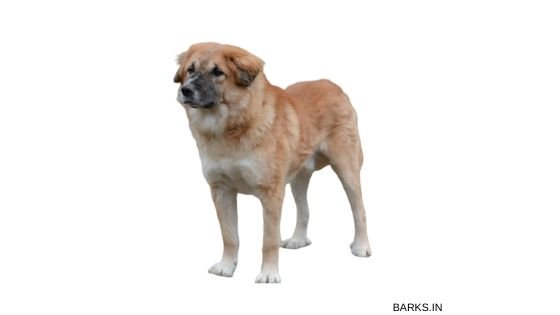
Status: Critically Endangered
Like all the nomadic tribes of India, Gaddi’s way of life is changing. The Gaddi’s use mini-vans to transport their sheep and no longer need a dog. The drop in the number of snow leopards in the wild means that they don’t need a large dog. These factors, along with the new lifestyle of the Gaddi, are the reasons for this dog’s decline.
What is the price of the Himalayan Sheepdog (Gaddi Kutta)?
Finding a Gaddi Kutta is difficult; their numbers have rapidly declined. A puppy costs about ₹25,000 to ₹30,000.
Interesting Facts about the Himalayan Sheepdog (Gaddi Kutta)

- Only a few 100 dogs remain, and they are on the verge of extinction.
- Many believe that this dog and the Kinnaur Sheepdog of Tibet share a common ancestor.
- These dogs defend their flock against the snow leopard.
- Also known as Bhotia, Indian Panther Hound, Mahidant Mastiff, and Bhutia
Jonangi

The Jonangi is a short-sparse haired (hairless) dog found in the Andhra Pradesh state of India. This breed of dog is a Terrier type dog. It is agile and capable of hunting vermin and small game. Duck herders and shepherds use this dog.
History and origin of the Jonangi dog
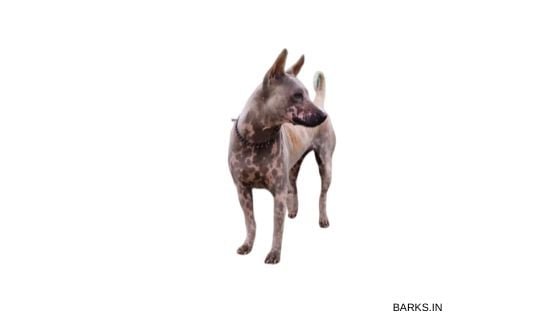
Jonangi is a unique dog with distinct traits. This dog comes from people who live in the Olleru Lake of West Godavari and Krishna Districts. Before the modern lifestyle, people who lived in these areas were fishermen and duck herders. They made a living out of the rivers and lakes.
The Jonangi has been living with these people for many years. No one knows the exact origins of this dog. Some think this dog to be the Indian Pariah dog, which has adapted to aquatic life.
Over generations, this dog has lost its dense hair. To the naked eye, this dog looks like a hairless dog. These dogs can live off fish and crab that they catch from the lake.
The purpose of Jonangi

Jonangi is a dog with many unique traits. This dog is the only dog in this list of Indian dogs that can fish. Jonangi also is a duck herder and a hunter. No other Indian dog has these traits.
Fishing dog: These dogs can catch fish in the lake. They still stand on the edge of the water looking for fish. Once a fish comes close by, they spear themselves into the water with open mouths. These dogs were so efficient in fishing that some people poison these dogs to prevent losses.
Duck Herders: Herding ducks requires speed and agility. The Jonangi has both these traits capable of running long distances and swimming. Their short hair helps them to dry off quickly, and the mud does not stick to their fur.
Burrowing: These dogs dig burrows in the river’s edge to avoid sunburns. They burrow deep and remain there when it is too hot outside.
The physical traits of the Jonangi dog
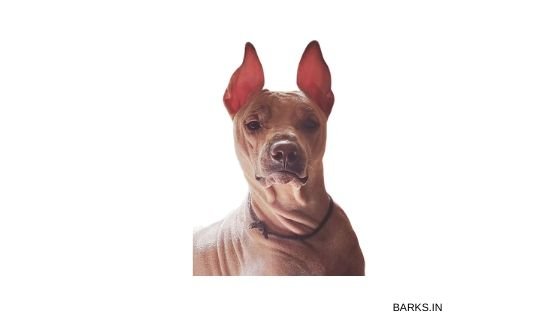
| Height | 47 cm to 62 cm |
| Weight | 22 kg to 27 kg |
| Coat | Hairless, sparse hair |
| Color | Multiple colors |
| Age | 9 to 13 years |
| Litter size | 3 to 6 |
This dog is small to medium-sized, athletic, and agile. They have a real terrier attitude and move with a pep in their step. The Jonangi is similar to the Mexican Xoloitzcuintle.
Head: The dog’s appearance should be clean and graceful. The head should be like a wedge with muscles on cheeks. It should convey a noble and faithful expression. The eyes of this dog are like almond and dark. These dogs have remarkable ears that stand tall and erect. The ears are elegant and taper into the head.
Body: The neck is long and blends into the body. This dog is slightly longer than tall. The chest is deep with ribs visible. The abdomen has a mild tuck and the chest blends into it. The tail is short and does not curve. They have round feet with muscular thighs.
Coat: The hair is sparse, and the skin should be visible through the fur. This dog occurs in several colors.
The temperament of the Jonangi
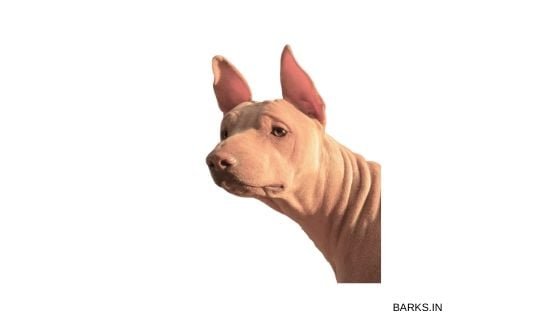
These dogs are alert and loyal. Adult dogs are calm and mature. This breed is smart, and they can fend for themselves in the wild. They can catch fish by standstill, waiting for the right chance. These dogs use their sense of smell to find crabs and use their strong jaws to crack the shell.
Like all dogs, these dogs need training. A well-trained dog develops a strong bond with its master.
Care of the Jonangi
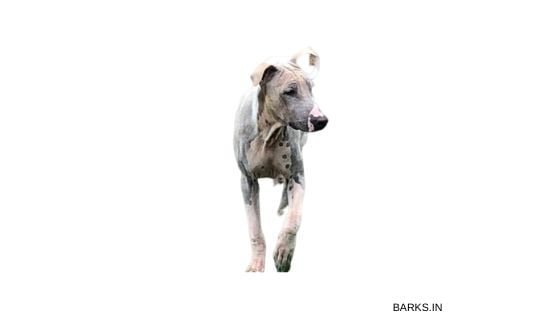
The lack of hair makes them vulnerable to sunburns. To hide for the intense sun, these dogs dig holes in the mud and hide. They also need to be kept indoors during cold winter months.
They are well adapted to hot and humid weather and have immunity against most canine diseases. With proper care, these dogs can live up to 14 years.
The current status of the Jonangi
Status: Endangered
Jonangi were once a common sight now, their numbers have dwindled. There are ongoing efforts to revive this breed by people in Nellore.
Like the other native Indian dog breeds, the Jonangi is also not recognized by any international Kennel Club or the FCI.
What is the price of the Jonangi?
Finding a Jonangi is difficult; their numbers have rapidly declined. A puppy costs about ₹5,000 to ₹12,000.
Patti Sheepdog
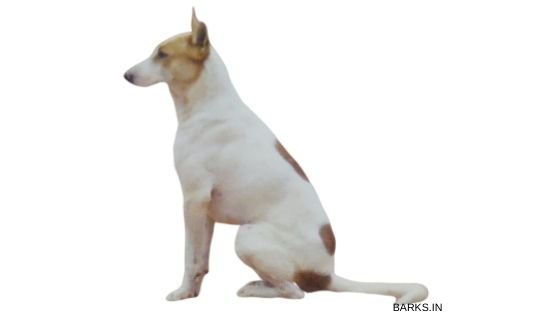
The Patti Sheepdog or the Patti Nai is a dog found in the south Indian state of Tamil Nadu. The name Patti in Tamil refers to sheep enclosures, Nai means dog. This dog is a south Indian sheepdog belonging to shepherds and cattle herders.
There is no information on the internet about this dog. Theodore Bhaskaran, in his book of Indian Dogs, is the only other source. This dog is sturdy and agile, being able to herd and guard sheep.
History and origin of the Patti Sheepdog
This dog is from the southern parts of the Tamil Nadu state. Shepherds in the Kanyakumari and Tirunelveli districts use this dog. The Patti dog is similar to the Pariah dog. We believe it is the Pariah that has adapted itself to this life. The people whom we spoke to say that the Patti has been with them for many generations.
The purpose of the Patti Sheepdog
This dog serves two purposes.
- Shepherd dog: The Patti dog is a sheepdog. They are agile, smart, and swift. The “Patti” is a temporary pen where the shepherds keep their flock. This dog helps in protecting the sheep from foxes and jungle cats. Two or three of these dogs herd the sheep, depending on the size of the herd. These dogs help the shepherds in rounding off their sheep. People also say that their dogs know their sheep and can find them even when they get mixed with other herds.
- Guard dog: These dogs are medium-sized and alert. These are not merely sheepdogs but also guards the “Patti.” They can find lost sheep, protect kids from wild jungle cats that prey on them.
The physical traits of the Patti Sheepdog
| Height | 40 cm to 45 cm |
| Weight | 28 kg to 30 kg |
| Coat | Single coat |
| Color | Multiple colors |
| Age | 12 to 15 years |
| Litter size | 5 to 9 |
The Patti dog looks similar to the Pariah. The dogs that we saw were 5 cm shorter than the Pariah dog. This dog is muscular and bulkier than the Pariah. The tail is round and is straight.
The dogs that we saw were all white mixed with black or brown patches. They have single-short-coat. The thighs have well-defined muscles. They are renowned for their stamina being able to work for 12 hours.
The temperament of the Patti Sheepdog
The Patti dog has a soft character. The dogs we met came to us and let us pet them. This dog has to be friendly because they are herding sheep through towns and villages. However, they are alert and bark when strangers approach their flock.
Care of the Patti Sheepdog
This dog is healthy and is well-adapted to the harsh herding life. The shepherds feed them with goat milk. They claim that it gives these dogs the strength that they need to work for 12 hours.
The current status of the Patti Sheepdog
Status: Endangered
The life of the shepherd is changing. In the olden days, shepherding was common, and people needed dogs to keep their flock. Today, with grazing space dwindling people are moving their sheep indoors. The Patti dog is slowly disappearing. This forgotten but beautiful and intelligent dog might soon fade away.
Even within India the Patti dog remains unknown. The need of the hour is international recognition from organizations such as the Fédération Cynologique Internationale (FCI) and the American Kennel Club (AKC).
What is the price of the Patti Sheepdog?
The Patti dog is not for sale. The shepherds don’t sell their dogs. This practice has kept this dog in pristine condition.
Interesting Facts about the Patti Sheepdog
- These dogs are never for sale.
- This dog is a variant of the Pariah dog.
- These dogs defend their flock against foxes and jungle cats.
- The name “Patti Nai” comes from Tamil meaning, sheep pen dog.
Kuchi Dog (The Afghan Shepherd dog)
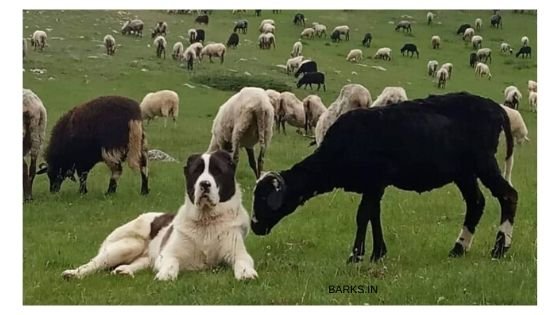
The Kuchi or the Kochee dog is a shepherd dog that belongs to the Kochi people of Afghanistan. This dog is a large breed of dog with a bear-shaped head. Kuchi people dock the tail and crop the ears at the base. The cropped ears and large size give this dog a fearsome presence.
History and origin of the Kuchi Dog

The Kochi people are nomadic who use this dog to guard their flock. This dog closely resembles the Central Asian Shepherd dog and could be a local variant. This dog is an ancient dog that is almost 4000 years old. Some people believe this dog to be a landrace. This dog is from the Ural, Caspian Sea, and Asia Minor area.
The purpose of the Kuchi Dog

This dog serves three purposes.
- Shepherd dog: This dog is a shepherd dog responsible for guarding livestock. They use their large size, strength, and agility to protect their flock against wildlife. This dog is sturdy and is willing to work.
- Guard dog: These dogs are large-sized and alert. They have a formidable reputation. They guard their home with determination.
- Dog fights: Traditionally, people have been using this dog in dog fights (a cruel practice that still exists) due to its large size. The dog fights in olden times were not a brutal affair. Shepherds use dog fighting to determine the best dogs to mate.
The physical traits of the Kuchi Dog

| Height | 70 cm to 95 cm |
| Weight | 60 kg to 100 kg |
| Coat | Double coat |
| Color | Multiple colors |
| Age | 12 to 15 years |
| Litter size | 5 to 8 |
The Kochi dog is large-sized. There are records of dogs weighing 90+ kg. The head of the dog is bear-like with a short muzzle. People crop this dog’s ears at the base of the skull. The body is square, and they are long as tall.
This dog has double coats, dense wool-like inner-coat, and medium-sized outer fur. The most common color is black or fawn. The legs are straight with thick bones.
The temperament of the Kuchi Dog

This dog is an ancient breed of dog used for herding sheep. These dogs are large-size; all of these qualities give them a fierce reputation. This dog has a stubborn character and requires proper training.
Care of the Kuchi Dog
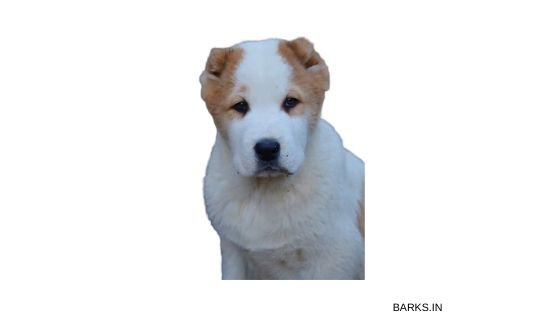
This dog is healthy and is well-adapted to the harsh herding life. They live long and have good immunity against most canine diseases. Their fur requires grooming. This dog sheds its coat. Hence daily grooming is needed.
Current Status of Kuchi Dogs
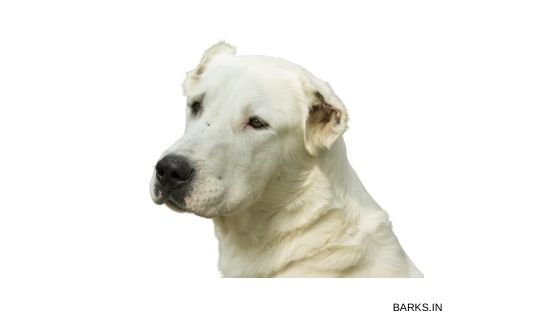
Status: Vulnerable
The life of the shepherd is changing. In the olden days, shepherding was common, and people needed dogs to keep their flock. Today, with grazing space dwindling people are moving their sheep indoors. This dog also lives in conflict and war-affected areas making its future vulnerable.
Interesting Facts about the Kuchi Dog

- This dog is a variant of the Central Asian Shepherd dog.
- These dogs look like a bear with their cropped ears.
- They are large and giant size dogs. Some are 90+ kgs in weight.
Kombai

The Kombai dog is from the south Indian state of Tamil Nadu. This dog is an old breed of dog from the Kombai village. Built like a small tank, the Kombai protected forts and palaces. These dogs are courageous and will not turn tail in the face of danger. These are war dogs from the south.
History and origin of the Kombai
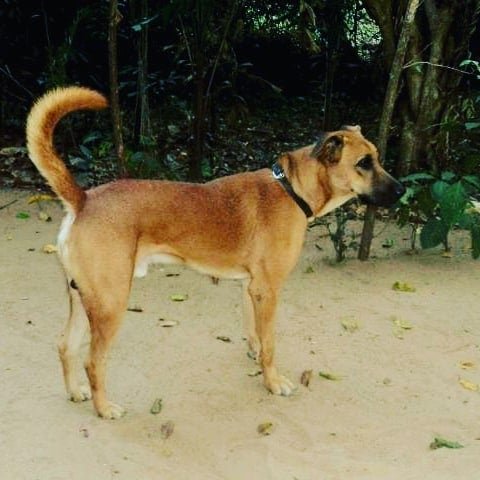
The Kombai is from Cumbam–Uthamapalayam villages in Tamil Nadu. They are one of the ancient breeds of dogs from south India. Temples all over south Indian have sculptures showing soldiers along with their dogs. These dogs resemble the Kombai closely.
The purpose of the Kombai dog
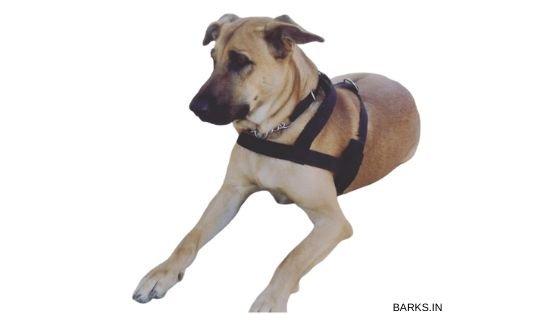
This dog serves two purposes.
- Guard dog: The Kombai is a medium-sized dog. They are sturdy, smart, and alert, making them a remarkable guard dog. In the olden days, people had Kombai guard forts and palaces. These dogs today are one of the best guard dogs found anywhere in the world.
- War dog: Kombai dog is the faithful war dog of south India. Records of British officers encounter these dogs paint vivid pictures of this dog’s bravery. One officer writes how they had to shoot these dogs even after they captured the fort. The Kombai has a never-give-up character.
The physical traits of the Kombai

| Height | 50 cm to 55 cm |
| Weight | 30 kg to 35 kg |
| Coat | Single coat |
| Color | Single color, brown dog with a black muzzle |
| Age | 9 to 13 years |
| Litter size | 5 to 10 |
Kombai dogs are compact and powerful. They are not large dogs, rather medium-sized but muscular dogs. The most notable features of Kombai are their independent and aloof character. They are outdoor guardians responsible for protecting large open areas from intruders. Kombai acts and reacts to the situation independently without any human guidance.
Kombai dogs are brown and have a black mask. Their body is square-shaped, compact, and powerful with a wedge-like head and powerful jaws. Kombai bites down with extreme force and is capable of breaking bones.
The temperament of the Kombai dog

The Kombai has all the essential traits of a war dog. They have a stubborn nature and require strong leadership. We don’t recommend this dog as your first dog. Kombai is a one-person dog and bonds with its master for life. A well trained Kombai is an excellent family dog.
Care of the Kombai
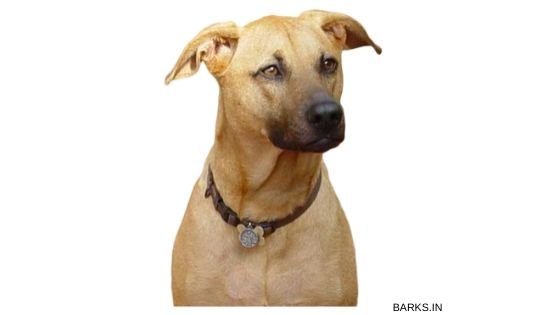
Kombai is a healthy breed of dog with few health issues. They do well with homemade food and don’t require any specialized care. They have a single short-coat, which does not require any grooming, and they don’t shed.
The current status of the Kombai

Status: Critically Endangered
Sadly this magnificent dog breed is at its final leg. Even after an extensive search, we could find just a handful of original dogs. There is so much misinformation about this dog on the internet, which is also hurting this breed.
What is the price of the Kombai dog?
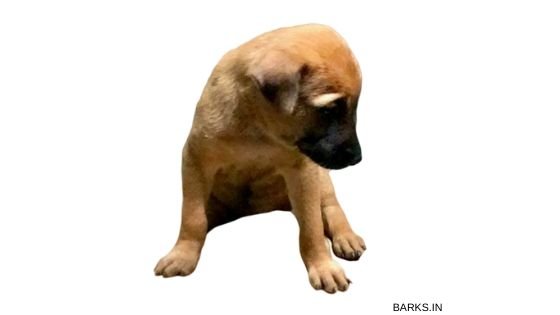
The Kombai dog is impossible to find. Only a handful of these dogs remain. It is difficult to put a price on this dog; they are priceless gems. A puppy costs about ₹15,000 to ₹22,000. However, one cannot guarantee the genetic purity.
Interesting Facts about the Kombai
- Only a handful of these dogs remain
- Mandai war dog or the Ramanathapuram Kombai is an extinct variant of the Kombai
- A Kombai does not give up. They are stubborn when on the attack, they don’t back down.
Kanni Dog
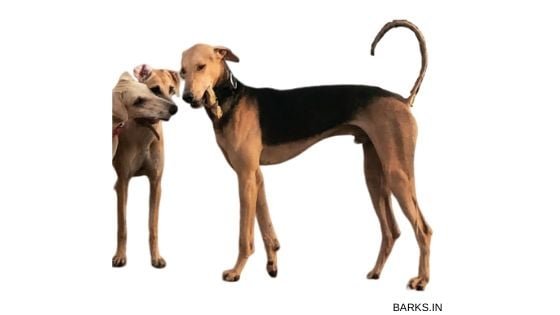
The Kanni is from the south Indian state of Tamil Nadu. This dog is an old breed of dog from the southern districts. Kanni is a sighthound with a slender and sleek body built for speed. The people use this dog for coursing small and medium-sized game such as hare, jungle cats, and wild boar. Vettai Nai is the local name for this dog. Vettai meaning hunting, Nai meaning dog.
History and origin of the Kanni
The Kanni dog is an ancient breed of dog from the Tirunelveli district. Old Tamil text speaks of hunting dogs (Vettai Nai) and their uses. Most experts agree that it is a reference to the Kanni and Chippiarai hounds. The precise origins of this dog is a mystery.
The purpose of the Kanni dog
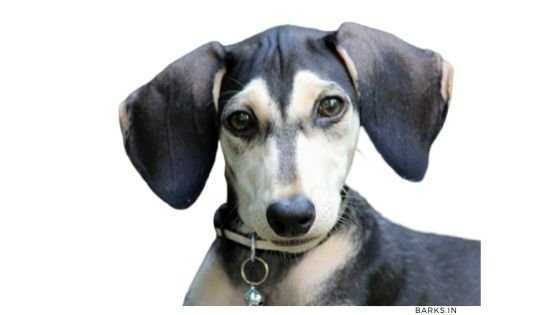
This dog serves two purposes.
- Hunting dog: The Kanni dog is a sighthound with an excellent sense of sight. They can spot small movements in the bush. These dogs also use their nose to pinpoint game. Their slender body, long legs, coupled with sight and scent senses, make this dog a perfect game hound.
- Guard dog: India has banned hunting. These dogs can no longer fulfill their real purpose. Today Kanni is a guard dog. Their alert nature, sense of sight, and smell make them useful guard dogs.
The physical traits of the Kanni

| Height | 65 cm to 70 cm |
| Weight | 27 kg to 30 kg |
| Coat | Single coat |
| Color | Black and Tan, Fawn, Brown are common |
| Age | 9 to 13 years |
| Litter size | 4 to 8 |
Kanni is a sighthound, they use their sight to chase down small game. Like all hounds, Kanni is aerodynamically built. Their body is longer than tall. They have a lean frame, their head is long and narrow. Kanni has a broad neck and chest with a tucked abdomen. The feet are long and bony with powerful paws. Kanni’s tail is long and whip-like. They have pendant shaped flappy ears to protect their inner ears from thorns.
Broad chest with large lungs enables them to take in large gulps of air while on the run. Kanni uses its long whip-like tail like the rudder of a ship to rapidly change directions. Kanni is elegant and not clumsy.
The temperament of the Kanni dog
The Kanni dog has an outgoing character and never shy. They are not aggressive. These dogs are affectionate and form a close bond with their human family. This dog is a pack hunter and should have the ability to work with a pack. An overly aggressive and shy character is a severe fault.
Care of the Kanni
Kanni is a healthy breed of dog with few health issues. They do well with homemade food and don’t require any specialized care. They have a single short-coat, which does not require any grooming, and they don’t shed.
The current status of the Kanni

Status: Endangered
The following factors are pushing these beautiful dogs towards extinction.
- India has banned all forms of hunting. Kanni is a game hound that cannot hunt.
- These dogs require large open spaces for them to play and be happy. They are not suited for apartments. Hence people living in a city cannot keep these dogs.
What is the price of the Kanni dog?
These dogs are in the Tirunelveli district. A puppy costs about ₹15,000 to ₹25,000.
Interesting Facts about the Kanni

- People exchange Kanni as a wedding gift from the groom to the bride. People still follow this tradition.
- This dog is a fast runner, can hit speeds up to 65 kph.
Chippiparai Dog

The Chippiparai is from the south Indian state of Tamil Nadu. This dog is an old breed of dog from the southern districts. The Chippiparai is a sighthound with a slender and sleek body built for coursing small and medium-sized game.
History and origin of the Chippiparai
The Chippiparai and Kanni share similar backgrounds and are from the same area. This dog is an ancient breed of dog from the Tirunelveli district. The precise origins of this dog is a mystery.
The purpose of the Chippiparai dog
The goal of the Chippiparai dog is similar to that of the Kanni dog.
The physical traits of the Chippiparai

| Height | 65 cm to 68 cm |
| Weight | 27 kg to 30 kg |
| Coat | Single coat |
| Color | Fawn and Brown are common colors |
| Age | 9 to 13 years |
| Litter size | 4 to 8 |
The original Chippiparai is a sighthound that is long, slender, and powerful. The dog should be elegant and graceful. The physical traits of the Chippiparai are similar to that of the Kanni dog.
The temperament of the Chippiparai dog
The Chippiparai dog is not nervous, and they approach people boldly. They are not aggressive. These dogs are affectionate and get along well with kids. They are alert and have a natural suspicion of strangers.
Care of the Chippiparai
This dog is a healthy breed of dog with excellent immunity from common canine diseases. They do well with homemade food. People in this dog’s native tract feed them soup made from goat legs.
The current status of the Chippiparai

Status: Endangered
The following factors are pushing these beautiful dogs towards extinction.
- India has banned hunting. This dog has lost its ability to fulfill its original purpose as a game hound.
- Chippiparai dogs are hounds that require open spaces. They are not suited for apartments. Only a few people in cities can afford to provide for a hound-like Chippiparai.
What is the price of the Chippiparai dog?
These dogs are in the Tirunelveli district. A puppy costs about ₹15,000 to ₹25,000.
Interesting Facts about the Chippiparai
- Chippiparai dog looks similar to Kanni, with only minor differences in height.
- This dog is a fast runner, can hit speeds up to 65 kph.
- Chippiparai is a pack hunter. People use these dogs for coursing and the stronger Rajapalayam for holding the fleeing game.
Indian Pariah Dog

Any list of Indian dog breeds cannot ignore the true Desi dog. The Indian Pariah is a fantastic breed of dog. Some call it “the dog of dogs!“. This dog for thousands of years lived next to human settlements. Through the process of adaptation, the Pariah dog continues to survive. The Indian Pariah dog is also facing an uncertain future.
The dogs that we see on our streets are not the original Pariah dogs. The stray dog is a cross between the Pariah and the modern breeds of dog. The original Pariah lives in remote villages in India.
History and origin of the Indian Pariah dog

The Indian Pariah dog is one of the oldest breed of dogs in existence today. Excavations in ancient sites all over India reveal interesting facts about this dog. From the skeletal remains, it is evident that this dog has not changed. Experts believe this dog to be 5000 years old. Studies on the Dingo show Indian Pariah ancestry.
The Indian Pariah faces its most challenging threat today. It is the threat of cross-breeding. The genetic purity of this dog is slowly eroding.
The purpose of the Indian Pariah
This dog serves many goals; in the olden times, the Pariah dog was a hunter. People realized the value of having a dog around. The dog’s alertness and better senses helped the early hunters. The relationship was mutual, and the dog got food and shelter. For the man, the dog became a provider. Jim Corbett, in his memoirs, recollects the help that he got from these dogs during his hunt for man-eaters. The Pariah forms packs and acts as community guard dogs.
The physical traits of the Indian Pariah

| Height | 46 cm to 52 cm |
| Weight | 20 kg to 30 kg |
| Coat | Single coat |
| Color | Red with black muzzle |
| Age | 12 to 15 years |
| Litter size | 7 to 10 |
The Indian Pariah dog is a small to medium-sized dog. These dogs have a wedge-shaped head with a medium muzzle. The body is a square with an erect tail that curves over the body. The eyes are almond-shaped and are dark. They have bat-like erect ears. The general appearance of the dog should show its loving nature.
The temperament of the Pariah dog
The Pariah dog is a loving and affectionate dog. They long to please their masters. They have an unusual ability to read people’s minds. The Pariah can sense a person’s mood and modify its behavior accordingly.
Care of the Pariah
Five thousand years of natural adaption has made the Pariah a very healthy dog. These dogs thrive in varied conditions. It is safe to say that these dogs are care-free dogs.
The current status of the Pariah
Status: Vulnerable
The following factors are pushing these beautiful dogs towards extinction.
- Cross-breeding with other dog breeds has polluted the Pariah’s gene pool.
- As their name suggests, they are an outcast.
What is the price of the Pariah dog?

An original Pariah puppy costs about ₹500 to ₹3,000.
Interesting Facts about the Pariah dog
- The Pariah dog is the most likely ancestor of many modern dog breeds.
- They are alert and are an efficient small game hunter.
- Even though the Indian street dog population is over 40 million, the original Pariah dog’s currents status is vulnerable.
Mudhol Hound

Mudhol Hound or the Caravan Hound is another magnificent sighthound from the state of Maharashtra and Karanataka. The Mudhol Hound is also known as the Caravan Hound.
Speed, agility, and stamina are the hallmarks of this dog. Mudhol Hound is renowned for its endurance. This dog can run long distances and still maintain a reasonable speed.
The Mudhol Hound, like all the other native Indian dogs, are critically endangered. These dogs require vast open spaces, which is at a premium in Indian cities, and the invasion of non-native dogs in Indian homes are pushing these dogs towards extinction.
History and Origin
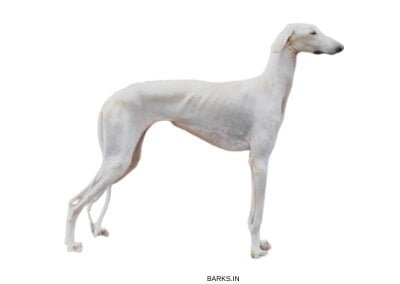
The Mudhol Hound is a likely descendant of sighthounds from the Middle East. Indian trade with the Middle East dates back 1000s of years. The Mudhol Hound were guardians of Persian trade caravans, trotting beside the convoys carrying goods. Many believe the name Caravan Hound is a reference to this.
Pashmi Hound is a variant of Mudhol Hound, which looks similar to the Saluki. Experts believe that the Mudhol Hound has both Saluki and Afghan Hound blood.
Traits

| Height | 66 – 70 cm |
| Weight | 24 – 30 kg |
| Coat | Single short-coat |
| Color | Several |
| Age | 12 to 15 years |
| Litter size | 6 to 9 |
The Mudhol Hound is a sighthound that uses its excellent vision and speed to hunt its prey. They are slender, balanced, and elegant dogs that symbolize strength and endurance.
The physical appearance of the Mudhol Hound should indicate alertness, balance, and elegance. This dog is never clumsy or off balance. Mudhol Hound has well-defined muscles and bones, which is visible through their thin skin.
Mudhol Hound breed description

The very first Mudhol Hounds were dogs brought to India from the Middle East by Arabian traders. Traders for their protection used Middle Eastern sighthounds such as the Saluki, Afghan hounds, etc. Some of these dogs were left behind by these traders. These dogs were the foundation dogs from which we have the Mudhol Hound of today.
Mudhol Hounds were popular in the 1980s. These dogs served multiple purposes. The import of foreign dogs began in India, rapid urbanization, the ban on hunting, etc. is pushing this dog towards extinction.
Individual interests and social media campaigns are helping this beautiful dog in its fight for survival.
Interesting facts

- Mudhol Hound is not only a fast sprinter but also an endurance runner. They are capable of running long distances in harsh conditions.
- In the native breeding tract, to verify the quality of the dog, people run a bangle through the muzzle of the dog.
- The Mudhol Hound, like the other native Indian sighthound, is facing extinction.
Rampur Greyhound

The Rampur Greyhound is a sighthound from the Rampur region of Uttarpradesh state. This dog is large and more substantial than other Indian sighthounds. However, this is a fast dog that is capable of reaching speeds up to 64 kph.
Like most other native Indian dogs, the Rampur hound is vanishing fast. This ancient hound is critically endangered. Rapid urbanization, import of foreign dogs, and lack of interest are few of the major factors that are pushing this dog towards extinction.
History and Origin
The Rampur Hound is an ancient dog. The precise history of this dog is still a mystery. Experts believe the African Sloughi is the ancestor of this dog.
India’s trade with Africa did not merely end with the exchange of goods. People were sharing cultures, lifestyles, pets, and languages. Through these exchanges, the Sloughi arrived in India. The influence of the environment, selective breeding, and other factors made the Rampur Hound.
Purpose
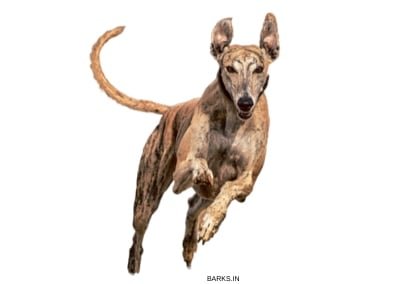
The next dog in our list of native Indian dogs in the Rampur hound. This dog is a fast sighthound. These dogs use their excellent vision to track and chase their prey.
In ancient times, these dogs accompanied royal hunting parties. Capable of coursing Blackbuck, Leopards, and sometimes even Tigers towards waiting hunters.
The Rampur hound is also an able guard dog. They are loyal, territorial, and wary of strangers. When not hunting, these dogs guard homes and farms.
Traits

- Height: 66 – 70 cm
- Weight: 25 – 33 kg
- Coat: Single smooth-coat
- Age: 12 – 15 years
- Litter Size: 8 to 12
The Rampur Hound is a medium-to-large-sized sighthound. Like the other Indian sighthounds, this dog is lean, muscular, elegant, and extremely well-balanced. This dog differs from other sighthounds in their size and weight. They are marginally taller and heavier than other Indian sighthounds.
The hallmark of this dog is its balance and elegance. While these dogs are fast, at the same time, they are never clumsy. They are well-balanced when running and use their whip-like tail for balance.
Temperament

The Rampur Hound is loyal, intelligent, and is devoted to its family. This dog is a hunting dog, and mentally they are tough and determined. At the hands of an experienced dog handler, the Rampur hound excels. Don’t choose this dog as your first dog.
When trained, they are a wonderful pet. Rampur hounds are courageous and never turn tail. These are the famous dogs that accompanied kings on the Tiger hunts.
Health
The Rampur hound is a healthy dog. They have excellent immunity against common canine diseases. However, they are prone to issues that affect sighthounds, such as.
- Bloat: Bloat is a condition where the intestine of the dog twists into a knot internally. Bloat is preventable, ensure that your dog does not run fast right after a large meal.
- Muscle and joint-related issue: This dog is fast and is prone to muscle tears and skeletal problems.
- Cataract: Older Rampur hounds are prone to cataracts. Similar to people, these dogs too suffer due to cataracts.
Interesting facts
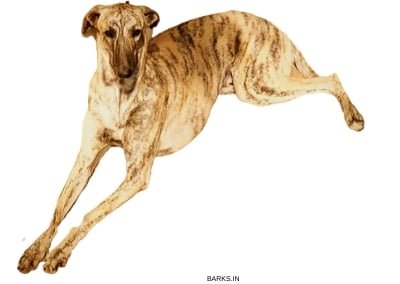
- The Indian government released a commemorative postal stamp with an image of a Rampur hound to promote and preserve this dog.
- Rampur hound is the largest and heaviest among all the Indian sighthounds.
- This dog is an ancient dog with African Sloughi, its most likely ancestor.
Pandikona

The Pandikona is a hunting dog from Andrapradesh state. They are an ancient and primitive breed of dog that looks similar to the Basenji dog of Africa.
Pandikona is a medium-sized sighthound that thrives in the harsh, hot, and humid weather of Kurnool district in Andrapradesh. The Pandikona is a Pariah-type dog, and they are free-ranging dogs.
Known for the fierce territorial instincts, the Pandikona is a ferocious guard dog. These dogs often fight over territory with other dogs. Fights are seldom bloody. Instead, they help establish hierarchies among these dogs.
History and Origin
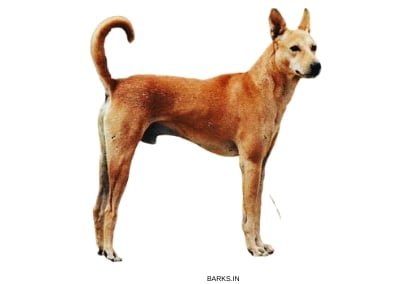
The precise history of the Pandikona is not known. These dogs have a close resemblance to the African Basenji dog. The African Basenji originates from the extinct Egyptian Tesem dog.
There are two possible origin theories. The Pandikona is a descendant of the Egyptian Tesem dog brought into India through ancient trade. With curved tails, hound-like features, and a muscular body, these dogs resemble one another.
Another theory about their origin is that these are descendants of the Indian Pariah dogs. Through the process of natural selection and possibly some selective breeding, these dogs became the Pandikona.
Purpose
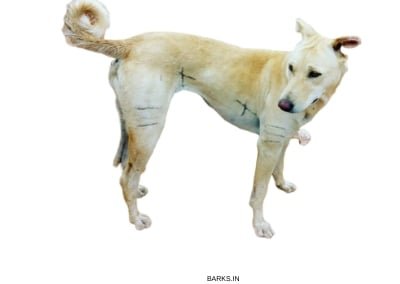
The Pandikona is an outstanding guard dog. People in this dog’s native breeding track use them to protect their homes and farmland. Well-muscled, sturdy, and courageous, these dogs are phenomenal guards.
Strangers who venture close to the property get a volley of warning barks. Ignore these warning barks at your own risk. These dogs are not afraid to use their mouths.
Sometimes people take these dogs along during hunts. These dogs are capable of chasing down small game such as wild Indian hare (rabbits). Unlike other sighthounds that chase animals towards waiting hunters, these dogs can hunt and bring down the prey on their own.
Traits

- Height: 46 – 52 cm
- Weight: 22 – 25 kg
- Coat: Single smooth-coat
- Age: 12 – 15 years
- Litter Size: 7 to 10
Pandikona is a well-muscled, medium-sized sighthound. They are powerfully built. Breeders choose the strongest and the dominant dogs as their breeding stock. This practice of breeding only the best dogs has made these dogs robust.
The Pandikona has a square-shaped body, with a curved tail. This dog’s curved tail resembles the Japanese Akita’s tails.
Temperament

This dog is independent. Unlike other dogs that are eager to please their master, the Pandikona goes about its business without much fuss. They like to be independent, free-ranging and are not our average apartment pets.
The village life is significantly different from an average city dweller’s life. So people often mistake then lack of training or socialization by the breeders to neglect. In reality, these dogs don’t like close companionship and prefer a free-ranging life.
Health
Pandikona is a healthy dog. People who breed these dogs rely on natural home remedies. The following are a few issues that affect this dog.
- Rabies: Rabies affects dogs that are not vaccinated. Pandikona lives in harsh environments where access to vaccines is limited.
- Mange: Mange is a skin condition that results in itchy skin.
Interesting Facts
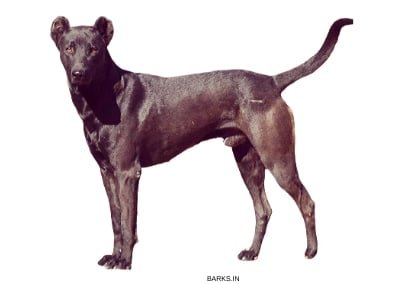
- Pandikona closely resembles the ancient Egyptian Tesem dog that is portrayed in pyramids.
- Pandikona is rare and is critically endangered.
- They are excellent guard dogs.
Kaikadi Dog

We want to let our readers know that reliable information about the Kaikadi dog is difficult to obtain. Very few people have access to the Kaikadi people to learn or study this dog. The basis of our data is from the book by Theodore Baskaran, Indian Dogs.
The Kaikadi dog is a rare breed of dog that lives along with the Kaikadi people. Kaikadi are nomadic people living in Maharastra state. The Kaikadi people’s way of life is still ancient, and they remain outside of modern society.
The Kaikadi dog lives along with these people. They are a hardy Whippet-like small-sized dog. Information about this dog is rare, even within India.
Purpose
The Kaikadi dog is an English Whippet-type dog. Small-size, alert, and excellent vision makes these dogs excel in hunting small game such are the hare, monitor lizard, and field mice.
History and Origin
Information about this dog is rare. We speculate that the Kaikadi is a cross between the English Whippet and the Indian Pariah dog.
Current Status
Kaikadis were rare even during old times. We assume that this dog is lost and is most likely extinct.
Interesting facts
- Kaikadi dog is an extremely rare dog. Very few people in India know about them.
- This dog lives with the Kaikadi nomadic tribe of Maharastra.
Vanjari Hound/ Banjara dog

The Banjara is an ancient sighthound from the state of Rajasthan. The Banjara people also live in several other Indian states. These people are traders, moving from one place to another.
The Banjara hound (also known as, Vanjari or Vanjara or Wanjar hound) belongs to these people. These traders use this dog to protect their temporary shelters.
The first account of this dog is by J. H Kipling (father of noble laureate Rudyard Kipling). He narrates that the Banjara hound is one of the best indigenous breeds of India.
The Banjara people don’t sell their dogs. Hence, this dog is extremely rare. Information about this beautiful hound is challenging to obtain.
History and Origin
All that we know about this dog is through the British accounts. No one knows the origins of these dogs. All that we know today is that these dogs live along with the Banjara people.
Temperament
In 18992, W.F Sinclair, an Indian civil service employee, records this dog being aggressive and with a fearsome temper. He narrates, even the Wanjari find it hard to manage this dog.
Current Status
Rapid urbanization and development are changing the lives of the Banjara people. We assume that this dog is most likely extinct today.
Interesting facts
- Vanjari dog is a sighthound that lives alongside the Banjara people of India.
- Banjara dog is most likely extinct.
Other notable Indian dog breeds
India is a land of diversity, and people speak over a thousand distinct languages. For people outside India, the regional variances of these dogs might be difficult to ascertain due to the usage of different names for the same dog.
The Kennel Club of India (KCI) does not recognize these dogs. Without scientific studies, it is challenging to distinguish regional variants from distinct dog breeds, especially when these dogs resemble one another closely.
Kumaon Mastiff

Kumaon Mastiff is a shepherd dog from the Himalayan region of India. Several dog experts in India say that this not a distinct breed rather a regional variant of the Himalayan Mastiff. Our opinion is the same.
Vikhan Sheepdog
The Vikhan Sheepdog is a sheepdog from the Indian state of Himachal Pradesh. These dogs live in cold Himalayan weather and have a dense coat. This dog also exists in Pakistan.
The Vikhan is most likely a distinct breed of dog. However, KCI does not recognize this dog.
Tangkhul Hui or Awang Huijao
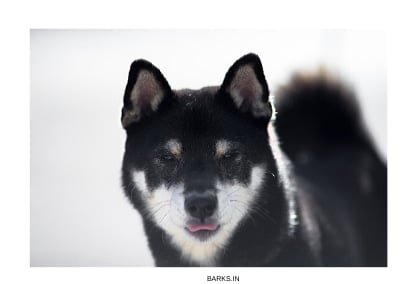
The Tangkhul Hui is a small-sized dog from the remote Northeastern corners of India. They are a Spitz-type dog with straight fur. This dog is extremely rare.
These dogs closely resemble the Korean and Japanese Spitz-type dogs. They are a small dog, with a square-shaped body with a curved tail. This dog is the only Spitz-type dog in India.The Indian Spitz, honestly speaking, is not a native Indian dog.
Indiscriminate cross-breeding, neglect in its homeland, and import of foreign dog breeds is pushing this dog towards extinction. People use this dog as a guard and companion dog. These dogs are fiercely loyal to their families and, at the same time, a loving dog breed.
Taji (Tazi)

The Taji or the Tazi is a sighthound from central India. These dogs closely resemble the Pashmi hound. We believe this to be a regional variant of the Mudhol Hound.
Kurumalai
Kurumalai dog is from the South Indian state of Tamil Nadu. They are a sighthound that lives in the foothills of the Western Ghats. We believe the Kurumalai dog is a regional variant of the famous Chippiparai hound.
Gull Dong dog
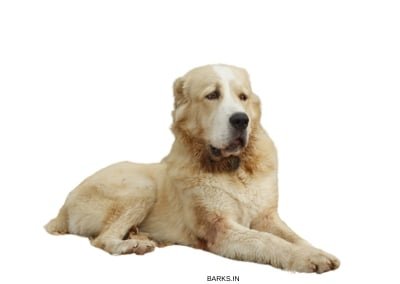
The Gull dong dog is a regional variant of the Kuchi dog. The ancestor of the Kuchi dog is the giant Central Asian Shepherd.
Sinhala Hound
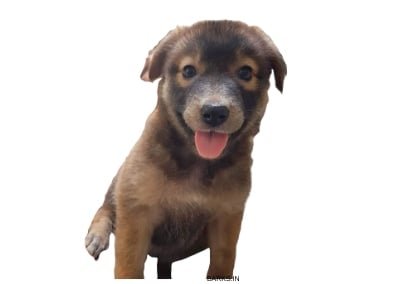
The Sinhala Hound is a Pariah-type dog of Srilanka. South India has close trade relationships with Srilanka. This trade brought not only goods but also dogs. The Sinhala Hound is closely related to the Indian Pariah dog.
The list of Indian dog breeds: Conclusion
The native dogs of the Indian subcontinent are rapidly declining. 95% of these dogs are close to extinction. We as people need to come together to save these beautiful animals before they vanish.
We are still compiling this and need your help. If you have reliable information about any Indian dog breeds and would like to add it to our list of India’s dog breeds, please contact us. We can get your knowledge published here.
If you would like to learn about the most poplar dogs of India please visit our review page.


Hello Amit,
Thank you for you comments. We have missed many Indian dogs. We are working on updating, please do visit back.
Thanks
Robert
Hi Alok,
Thank you for taking time in reading our post. We love our dogs, and we spent considerable effort (post is over 10,000 words) in collating the information about native Indian dogs. We have detailed posts about Kombai (https://barks.in/kombai-dog/) and Rajapalayam (https://barks.in/rajapalayam-dog/) on our site.
Thanks
Hi Mr Krushna,
You can use this content and translate it to Marathi. Please remember to include a link to this post as the original source. We spent several 100s of hours in compiling this information. Please don’t copy and paste.
Thanks